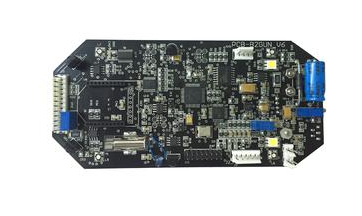With the rapid development of mobile phones, electronics, communication industries, autonomous driving, etc., to a large extent, it has greatly promoted the continuous growth and rapid growth of the PCB circuit board industry. People are concerned about the quality, number of layers, weight, precision, and The requirements for materials, colors, and reliability are also getting higher and higher.
It is also due to fierce market price competition, and the material cost of PCB circuit boards is also on a rising trend. In order to enhance the core competitiveness of the industry, more and more manufacturers choose to monopolize the market at low prices. However, behind these ultra-low prices, they are often obtained by reducing material costs and process manufacturing costs. In this way, the quality of the PCB circuit board itself cannot be reached. Therefore, the PCB circuit board components are usually prone to cracks (cracks), Easy to scratch, (or scratches), its precision, performance and other comprehensive factors are not up to the standard, which seriously affects the reliability of the later PCB circuit board. It should be proved that the sentence is cheap and not good. It may not be good, but good Goods must not be cheap is an iron proof fact. Faced with the various PCB circuit boards on the market, there are two ways to distinguish the quality of PCB circuit boards; the first method is to judge from the appearance, and the other is from the PCB board. It is judged by its own quality specification requirements.
The primary factors to identify PCB circuit boards:
Identify the quality of the circuit board from the appearance
Under normal circumstances, the outside of the PCB circuit board can be analyzed and judged by several aspects of the appearance;
1. Light and color.
The external PCB circuit board is covered with ink, and the circuit board can play the role of insulation. If the color of the board is not bright, and there is less ink, the insulation board itself is not good.

2. Standard rules for the size and thickness of PCB circuit boards.
The thickness of the circuit board is different from that of the standard circuit board. Customers can measure and check the thickness and specifications of their own products.
3. The appearance of PCB welding seam.
The circuit board has many parts. If the welding is not good, the parts are easy to fall off the circuit board, which will seriously affect the welding quality of the circuit board. The appearance is good. It is very important to identify carefully and have a strong interface.
PCB human learning
3. Inspection of optical density.
Optical density refers to the transmitted optical density. The transparent part and the opaque part can be measured with an ordinary densitometer during inspection. The measuring area is 1mm in diameter. When the requirements are not high, the visual comparison method can be used for inspection. During the inspection, the transparent and opaque parts are compared with a standard gray copy base plate or gray calibration copy base plate.
4. The simple inspection of the film can be carried out by observing and comparing the coincidence degree of the circuit, solder mask and character film of the same PCB design file. The degree of coincidence should be basically consistent with the file observation. Be careful not to touch the film directly with your hands during this process, so as not to scratch the film with your nails and leave dust and fingerprints on the film.
For a long time, the dimensional stability of film has been a problem that plagued PCB production. Ambient temperature and relative humidity are the two main factors that affect film size changes. Most of the changes in film size deviation are determined by ambient temperature and relative humidity. The deviation of the total deviation affected by the ambient temperature and relative humidity is proportional to the size of the film. The larger the size, the greater the deviation.
Through the control of the ambient temperature and relative humidity, the deformation of the film can be controlled. Ensuring the stability of the ambient temperature and relative humidity ensures the stability of the film size to a large extent. Thick film (0.175mm~0.25mm) is less sensitive to environmental changes than thin film (0.1mm).